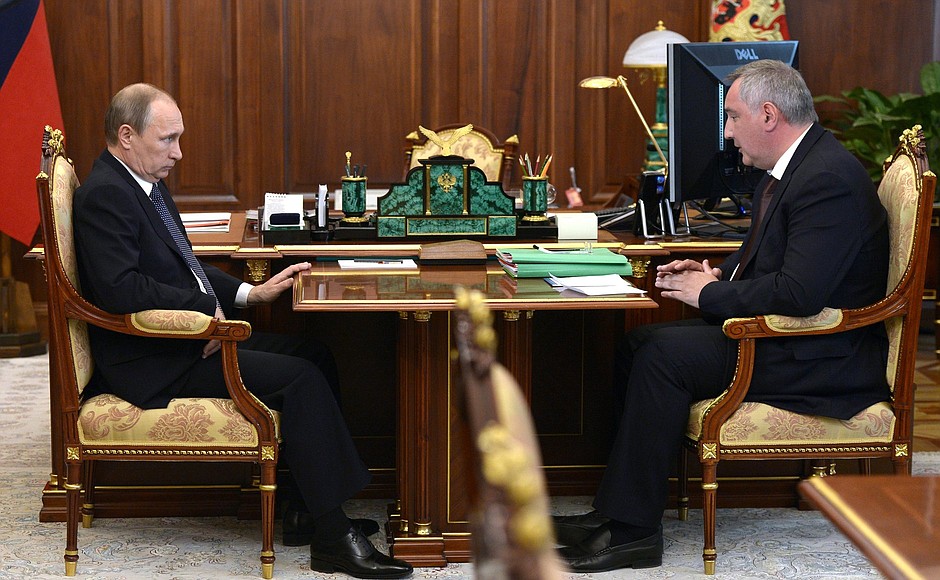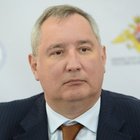
President of Russia Vladimir Putin: Mr Rogozin, let’s discuss engine manufacturing today, not only with regard to our import replacement efforts, which we will certainly examine, but also with regard to our development plans in this area. What is the situation with these plans now? Let’s discuss this matter and look at what else we need to do here.
Deputy Prime Minister Dmitry Rogozin: Mr President, you asked us to make a thorough examination of the situation in our engine manufacturing industry, looking at it as a comprehensive whole and in terms of our development plans for what I would call a priority area in Russia’s machine-building sector.
Looking at the situation overall, Russia is one of the world’s top five engine makers, along with the United States, Britain, France and Germany. We have the full production cycle in this sector, including not only production technology, but also construction materials, software, microelectronics, high temperature physics and much more. Of course, all of this requires a vast store of knowledge.
This notwithstanding, we have built up quite a serious lag over the past years. In the 1970s and 1980s, we were ahead of Western equivalents in some of our projects, especially in engine manufacturing for military aircraft.
Vladimir Putin: We are still making use of these achievements.
Dmitry Rogozin: Yes, this is precisely the point.
Vladimir Putin: And not just we, but our partners too, have been using our engines.
Dmitry Rogozin: Yes, we are currently using around 30 engines that were developed back during those years and went into large-scale production in the 1990s.
As you have noted already, there are currently some problems related to import replacement. In the segment of aircraft engines, we manufacture practically all types of engines here in Russia, except for the Antonov airplanes: the An-12, An-24, An-26 and An-124.
Vladimir Putin: You can replace them.
Dmitry Rogozin: Yes, I will explain in a moment how we plan to organise this work, Mr President.
The situation is a bit more complicated with helicopters. We have started producing the VK-2500 engine at the Klimov plant in St Petersburg, and this essentially covers our needs for military hardware (Kamov and Mi helicopters). But we are still dependent on others when it comes to our civilian helicopters. The engine for the Mi-26 helicopter is produced by Motor Sich in Zaporozhye [Ukraine], and for civilian helicopters such as the Ansat and other promising models, we depend on the French, Canadians and Americans.
We have made a thorough analysis of the situation. We have two new engines under development at the moment, the PD-14 for the [civilian] MS-21 plane, and a military engine that we are developing for a promising new second stage attack aircraft system.
Following your instruction, we carried out unprecedented work to restore production in Samara of NK-32 engines for our Tu-160 strategic bomber.
Having analysed the situation and spoken with the designers, we came up with an interesting solution. We think we should look at the issue not as a single priority goal tied to the development of particular models of aircraft, because it takes longer (from three to five years) to develop an engine than to develop a plane. We believe we need to look ahead and create a reserve for the future.
Our solution is based on the work underway at Perm Motors, where we want to develop a gas-generator based engine that would allow us to expand our engine range for aircraft with a take-off thrust of 9 to 16 tonnes.
This would enable us to eventually replace the engines on the new Sukhoi Superjet, develop a replacement for the Ukrainian engines our Mi-26 helicopters are using, and provide engines for the future Russian-Chinese heavy helicopter and a larger version of the MS-21 for 210 passengers.
We can achieve the same goal by enlarging the NK-32 engine’s gas generator. In other words, we can do what we are already doing now for engines for our strategic bombers, adapting them for military transport aircraft and for the Russian-Chinese heavy long-haul wide-bodied aircraft. I have already told our Chinese colleagues that we can do this work independently of any third parties, and they reacted positively to this.
You know of the work underway in the shipbuilding sector. As you instructed, the focus is on import replacements for the gas generators that we used to receive from Ukraine, from Zorya-Mashproekt, and in 2017–2018, we will start covering our navy’s needs entirely on our own.
Seeing as we can combine engine-making technology used in the shipbuilding and aircraft manufacturing sectors, we propose (and hope you will support) the idea of setting up a separate state subprogramme that would be part of the overall state defence industry development programme. We will have the programme ready by December this year. This would enable us to move ahead on developing this family of engines, reduce the development time, boost our human resources potential, and, of course, enable us to save money and plan production of a full range of engine models, from 9 to 35 tonnes. In other words, we would be able to resolve all issues this way.
I have prepared a detailed report with all the calculations. I would like to ask you to issue the instruction.
Vladimir Putin: Do you plan to use the funds already allocated for developing the defence industry, and will not be requiring new funds?
Dmitry Rogozin: That’s right. It is not new funds we need, but some more organisational work.
Vladimir Putin: You mean restructuring spending?
Dmitry Rogozin: Yes, that’s right.
Vladimir Putin: All right. Let’s do it.
<…>
